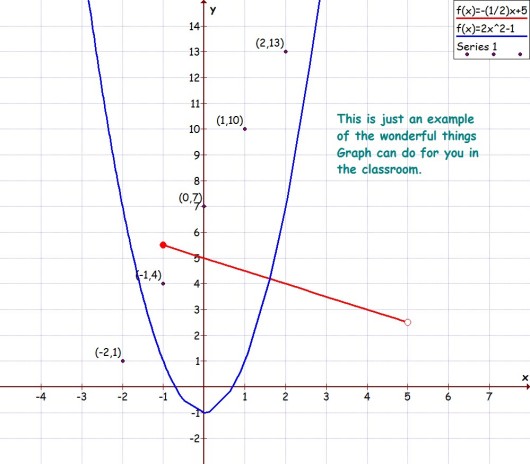Also as a pdf Student Independent Study Routine
Math is just a different type of subject. It requires a unique balance between memorizing facts, following procedures, problem solving and reasoning. More often than not, these aspects intertwine no matter what age, grade or course. I want to focus on what students can do on their own to help with these skills when you’re not present, i.e. when working at home or in school with a substitute. Learning and practicing independently should be a routine for students. As a teacher, you must teach them how to do this effectively. It’s important to having clear, defined actions that students can practice when you are present, so that they will understand what to do when you’re not. Here are a few suggestions that you can modify to fit your current classroom note taking structure. If you do not have a current note taking structure, maybe this will be motivation to create one. See Helping Students Stay Organized for ideas.
The course binder should be thought of as a record of learning and achievement, as well as information pertaining to the content. Chances are students have made mistakes along the way on assignments or assessments, or have had misconceptions at one point or another. Often teachers get into a routine of teaching, testing, teaching, and more testing. There’s no time set aside for reviewing, reflecting, or reassessing. Reviewing only seems to happen when a subset of skills are passed along to the next chapter. Reassessing may happen on 20-30% of the concepts as a residual effect of the natural sequence of learning mathematics, but never in a capacity that would allow teachers to really determine if true learning has occurred. Lastly, students rarely have the opportunity, or take the opportunity, to reflect on their personal learning and growth on a concept, chapter or unit. This is the area in which students need a great deal of guidance in order to gain the most out of their education.
While in a perfect world it would be wonderful to conference with each and every child after an assessment, to explain, reteach and reassess, or simply have a conversation with the child to gain an understanding of their thought process on particular questions, it’s impossible to do so. It’s imperative to teach students how to assess their own learning, investigate on their own using the tools you have provided them, as well as using outside resources like parents, siblings, and online resources. Before this can occur, you must teach students to value their learning, and essentially fight for understanding in cases when it is not been reached. It’s only through this desire for understanding that students will be motivated to learn from their mistakes.
When a student takes an assessment of any kind, quick checks, daily assignments, formative assessments like chapter tests, or summative assessments like semester or end of year exams, it’s a snapshot of what the student knows at that point in time. Results are usually recorded in the fashion of points or percentages. Regardless of the type of assessment, for most students 100% performance has not been achieved. There is always room for further understanding. This understanding will only come through review, relearning, and reflecting.
To start this process, students must do the following:
- Have students individually review their assignment/quiz/test, absorb the results, and record in writing their initial feelings and frustrations, as well as identified mistakes or misconceptions. Often times students want to seek your immediate assistance in understanding why they lost points or missed a problem. Teach students to do this step individually first for maximum benefits. As a side note, while I feel strongly about writing across the curriculum, this is not the place for students to feel added pressure and stress with perfecting their spelling, grammar and sentence structure. Allow for lists of comments, ideas or questions to get this aspect of the process accomplished.
- Have students to ask their questions pertaining to the particular problems they did not understand and had points deducted. First give other students in class the opportunity to respond to these questions. This is a valuable tool to use in this instance. Allow the student who just reached an understanding of his/her own mistake explain another student’s misconception. Wow! How powerful is that? Not only is the student who asked the question, getting his/her question answered, but the student who just had a major revelation is given the opportunity to verbalize his/her understanding. Relying on students who initially understood the problem to provide an explanation is just as effective. Of course, if this opportunity does not arise, you can certainly take the role of explaining the problem or concept to the class yourself.
- After all questions have been answered, students are to formally correct all of the partially or completely missed problems on a new sheet of paper. These corrections would have the problem, including word problems, and problems with graphs and geometric art, and the correct process to achieve the solution. The student should be able to look back at this problem on this formal correction sheet and have all the necessary information to answer it completely.
- Below the formal rework of each problem missed, have students summarize their misconception, mistake, or new-found knowledge. Students may want to read what they wrote on Step 1 to reflect on their learning up to this point. They may speak of a simple calculation error, misuse of a formula, an incomplete process, or a total lack of understanding at the time of the assignment/quiz/test. Remind them that this is a form of documentation of their learning. They need to write clearly and completely. This piece is more formal than was done during Step 1. Students should be encouraged to pose further questions in order for them to gain deeper understanding of that particular concept in that problem. These new questions can be brought out in class discussions or one-on-one with the teacher. Flagging these questions with a post-it note may emphasize to students to follow up with the teacher or class.
Understand this is difficult to do on every assignment and task students complete. Targeting a subset of problems, either at the beginning of a unit after base knowledge has been taught, or at the end of a chapter for an overall student evaluation would be more manageable and possibly more effective.
I hesitate to recommend this type of student reflection be tied to a grade of sorts. While students are somewhat motivated to complete assignments because there is a grade attached to it, the purpose of this is to have students examine what it is they know and what information they misunderstood or lacked. This is a discipline. Students have to experience success from of this type of reflection before they buy into the regimen. Teachers should providing non-evaluative, mathematical feedback that is positive and encourages a dialog between student and teacher. If students feel as though this is just another hoop to jump through to get a grade, it becomes a chore and fails as an effective process.



